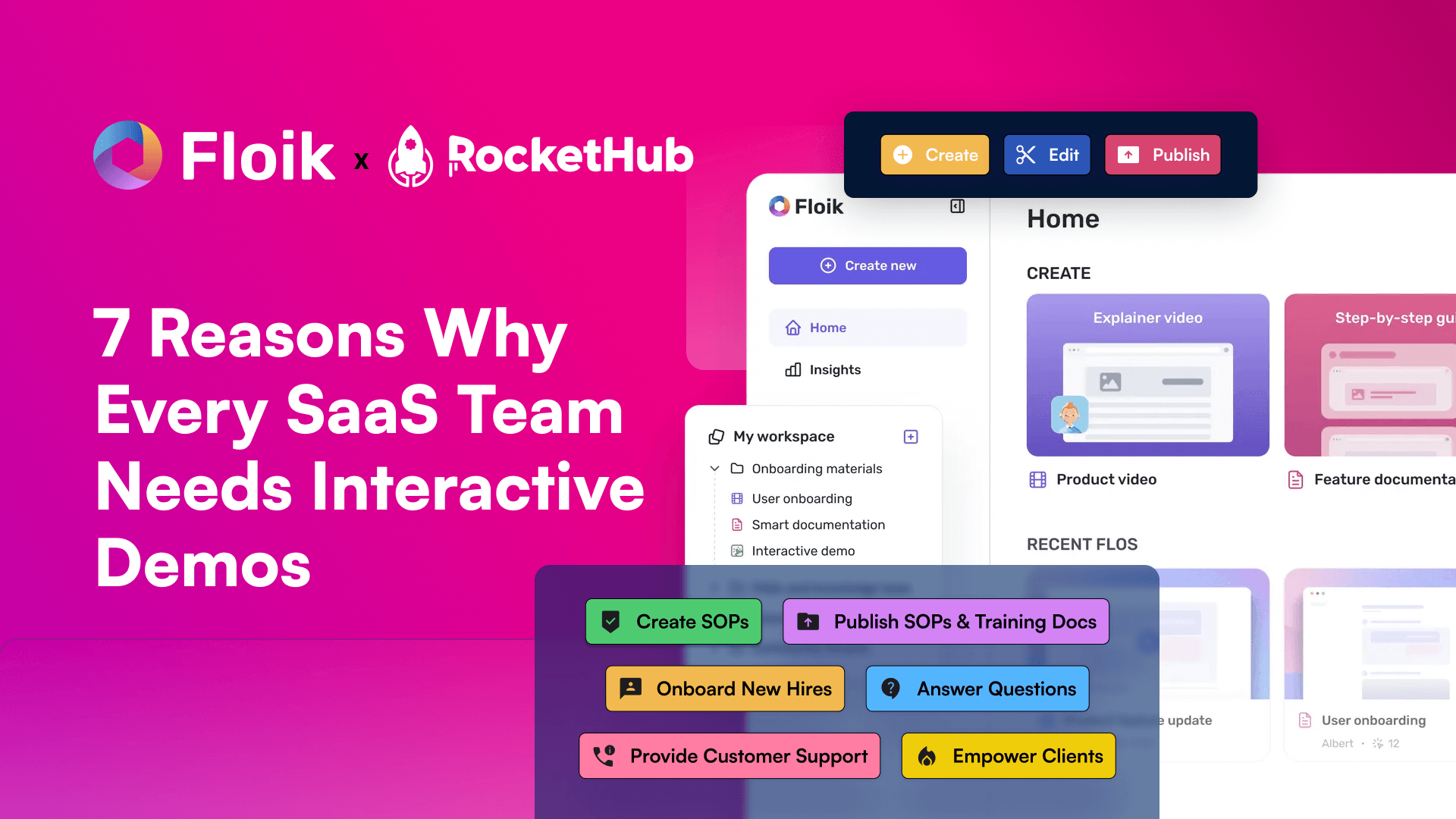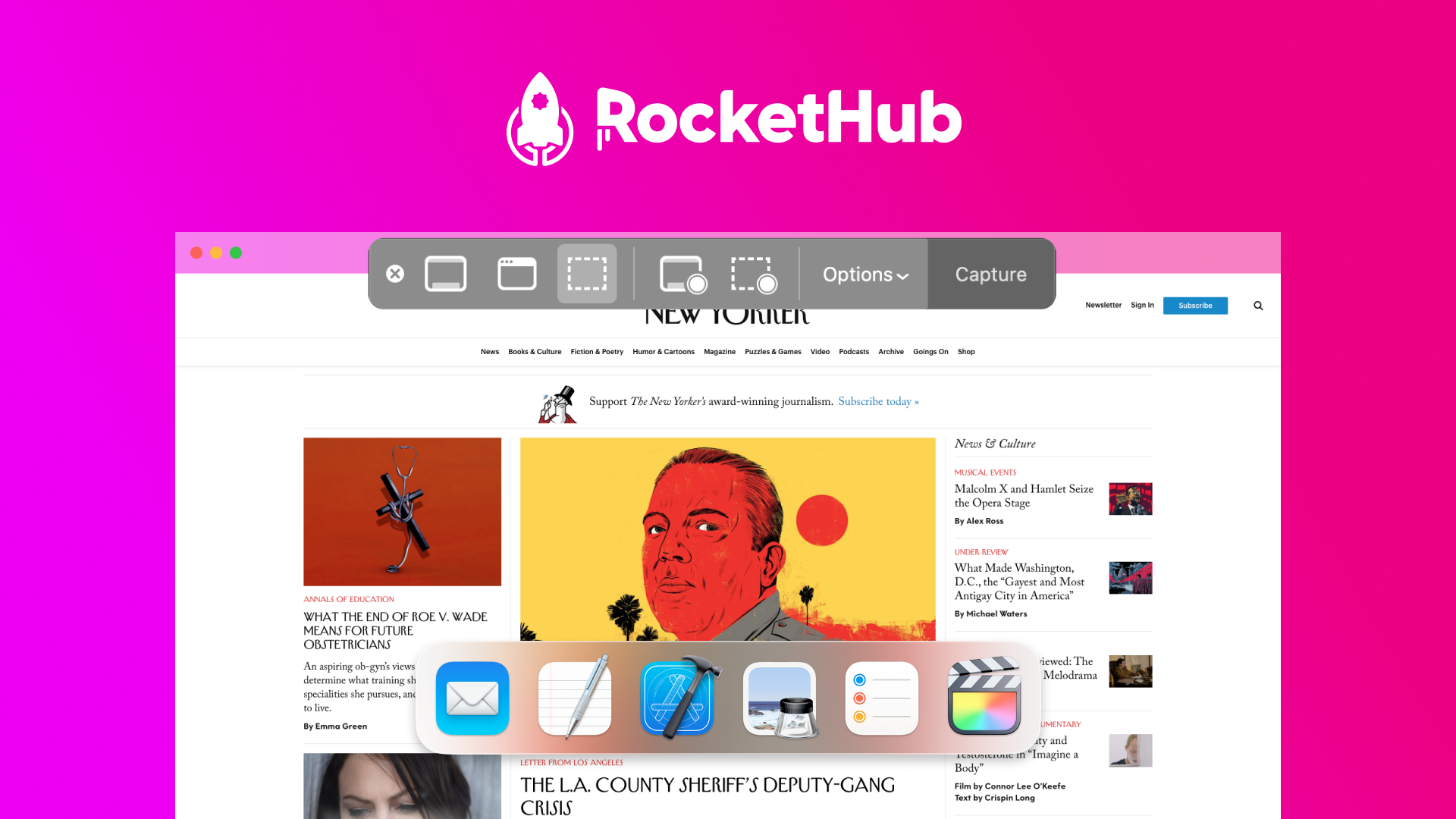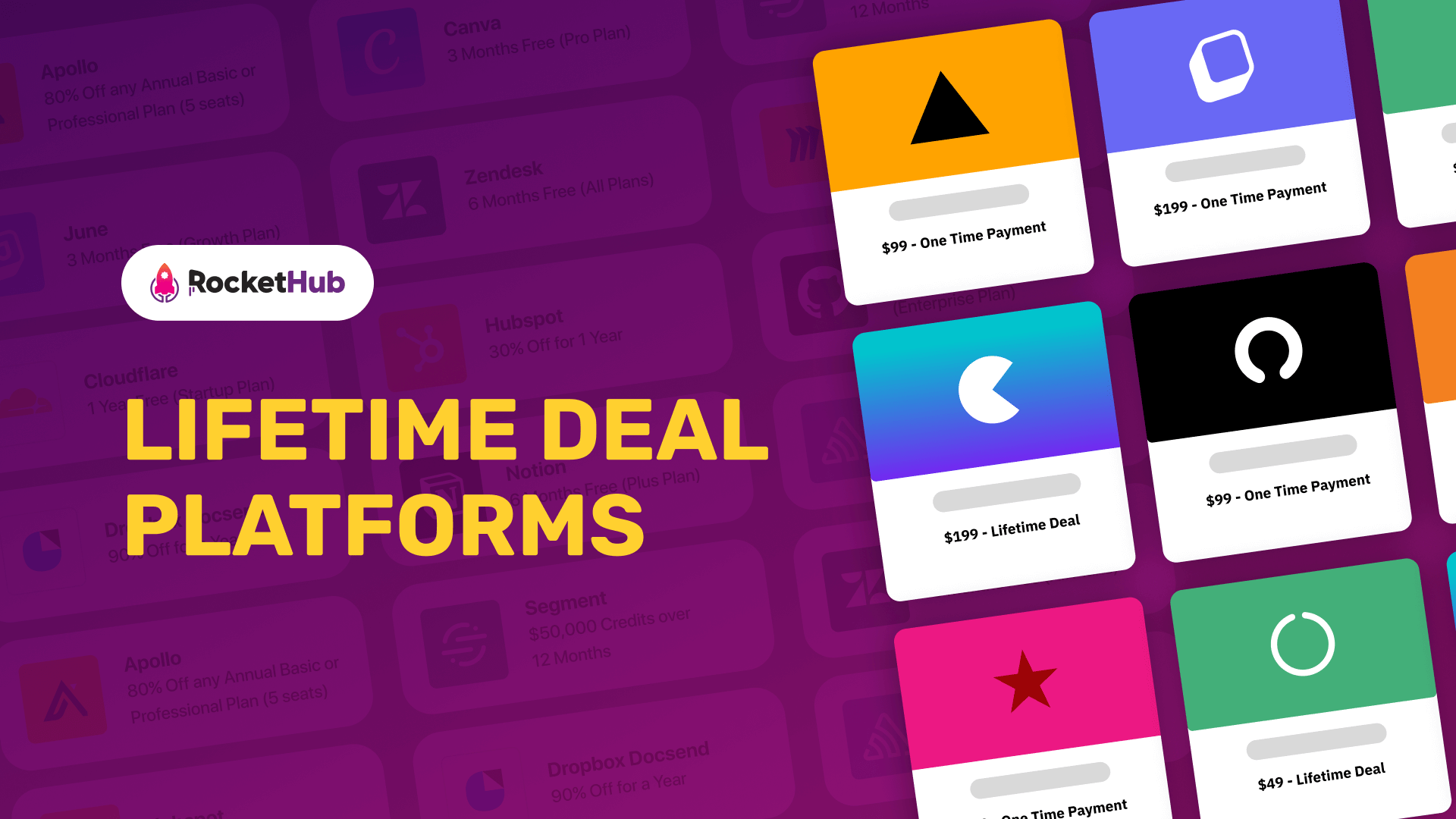
The Winning Software Marketing Strategy
- RocketHub Team
- March 30, 2022

Sure, you may have spent blood, sweat, and tears into creating your SaaS product all this while, but the journey doesn’t really end here. The next step to a successful SaaS startup is creating a winning software marketing strategy. You need to create a strategy that can help customers discover your brand and purchase it. This demands a combination of multiple techniques planned and executed strategically. If software marketing is not your best forte, we have just the right guide for you.
We have outlined the complete step-by-step process of creating a winning software marketing strategy to help your product reach the ideal customers and bring more profits to your business. Let’s get started.
What is Software Marketing?
Before we jump to the strategies and techniques, let’s just revisit the basics once again.
Software marketing is simply a process of advertising software products to customers and making them purchase them. Software marketing is a blend of strategic implementation of different digital marketing techniques and nurturing customer relationships constantly to prevent them from switching to a competitor. Hence, software marketing is also largely about customer retention.
Software Marketing vs. Traditional B2B Product Marketing
Compared with traditional B2B product marketing, software marketing is highly different, which is precisely why you need a software-specific marketing strategy for your business.
For starters, with a software marketing strategy, you’re typically selling a software product that is intangible that customers cannot see or touch, whereas B2B product advertising consists of the promotion of tangible and physical products. Since the products for B2B advertising are tangible, it is easier to demonstrate and promote the product accordingly.
Next, software marketing strategies are all about long-term customer subscriptions, whereas the B2B advertising strategies are about on and off purchases based on requirements.
Lastly, you have the opportunity to upsell with software marketing strategies, which is not the case with regular B2B product advertising.
Since the products are different in both types, it calls for different marketing strategies. The key is to transition towards inbound marketing strategies, which are mostly customer-centric. It is focused on building trust with the customers and nurturing long-term relationships with them.
The Best Software Marketing Strategies
Now that we have discussed the basic information of a software marketing strategy let’s jump to the process of creating a winning software marketing strategy. There are tons of strategies you can use for your software marketing journey, but we have outlined the most important and the non-negotiable ones in this post. Let’s get a quick insight into the strategies.
Content Marketing
Content marketing is the development and distribution of relevant and valuable content such as blogs, case studies, newsletters, social media posts, emails, videos, etc., to current and potential customers. It helps build authority as a business and provides value to the customers, which is one of the sole requirements of building a successful software marketing strategy.
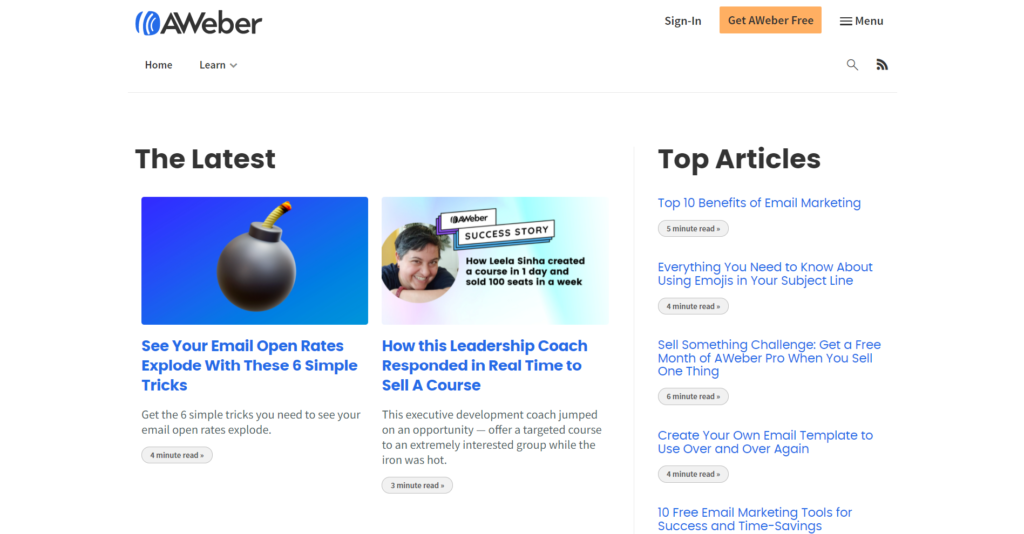
Aweber, an email marketing tool, has its own hub of resources with loads of blogs stacked to assist and educate its customers about its services.
Email Marketing
Email marketing is the use of emails as a part of marketing efforts to promote the products of a business and incentivize customer loyalty. Since emails are a common way of communication, this marketing strategy can help build brand awareness and attract new customers.
You can send out emails regarding updates about discounts, product launches, coupon codes, and other events. You can also send informational content that works as a content marketing strategy to educate your customers about your products and services.

In the image above, you can see an example of an email newsletter sent by Alison Courses, which is about the November sale running on her certification courses and diplomas.
Free Trials
Like we already said, software products are intangible, which is tough to demonstrate. This is precisely why free trials are an amazing way to bridge this gap and demonstrate the product’s effectiveness to the customers.
Irrespective of the product you are selling, you can always offer a free trial for a specific time period, which can significantly improve the chances of selling your products. Additionally, the cost of free trials is inexpensive too. Hence, if you score a customer via free trials, you are definitely making a profit here.

GetResponse offers a 30 day free trial period wherein you simply need to create an account with no credit card credentials required. You can use their services for 30 days for free to analyze if it works for you. If it does, you can purchase their services post the free period.
Search Engine Optimization (SEO)
Search Engine Optimization or SEO is a set of actions and practices focused on improving the position and appearance of your website in the search results.
SEO comes under three different types:
- Off-page SEO
- On-page SEO
- Technical SEO
Since search engine result pages are one of the most common spaces potential customers use to find a solution to their requirements, with the right SEO practices, you can improve your rankings in the SERPs and drive more high-quality traffic to your business.
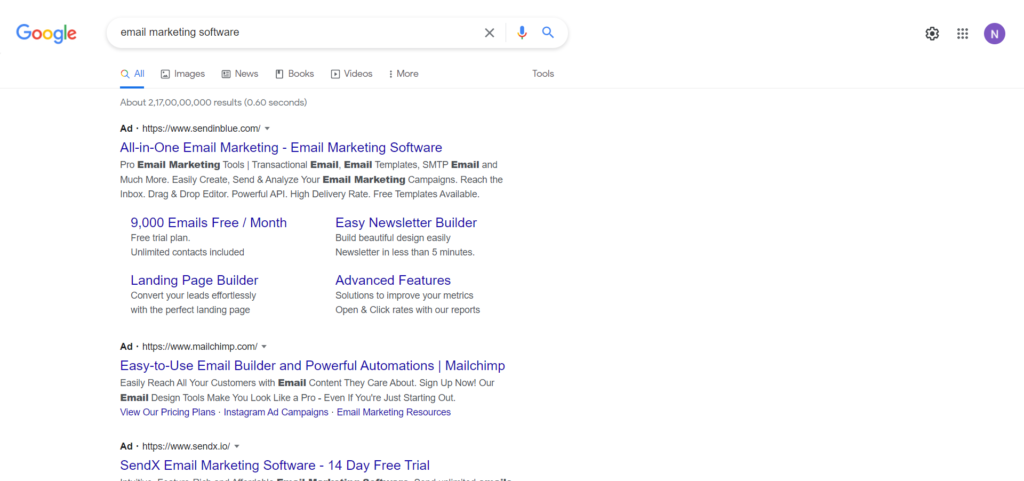
For example, if we type email marketing software in Google Search, we can find SendinBlue as the topmost option, followed by Mailchimp.
Software Partner Programs
Software partner programs can be slightly complex, but it has a massive value for every company when leveraged correctly. There are different types of software partner programs available such as referral programs, affiliate programs, etc., which you set up in your business and collaborate with other businesses to bring more customers.
However, a successful partner program builds on mutual benefits. When the other business that collaborates via your partner program brings you a customer, they gain incentives in the form of money, discounts, etc., that are equally valuable to them.

See the example above of an affiliate program by Bluehost that offers $65 for every qualified hosting purchase to their partners.
The Winning Software Marketing Strategies
After discussing the strategies required for a successful software marketing strategy, let’s understand how exactly you can utilize the strategies to bring the maximum ROI to your business.
Set Some Goals
The first step to creating a winning software marketing strategy is setting S.M.A.R.T goals. You need to create Specific, Measurable, Attainable, Relevant, and Time Based goals.
Your goals shouldn’t be too vague and unrealistic. It should be very realistic and measurable. It should align with the overall vision of the company. Lastly, you need to set specific deadlines to the goals which your team needs to adhere to.
Using this method, you can create the right set of goals for your business and achieve both long-term and short-term success for your company.
Decide Which Types of Content You Want to Produce
As we said, there are plenty of content options to choose from. However, the key is to stick to only the ones that are most suitable for your business. So, how do you understand what type of content works best for your business?
Start analyzing the buyer’s journey and understand what type of content fits at each stage of the journey.
For example, we have categorized the different content types that work well in different stages of buyers journey for most businesses:
- Awareness Stage: Blog posts, ebooks, guides, white papers, checklists
- Consideration Stage: Case studies, webinars, podcasts, comparison guides, free samples,
- Purchase Stage: Trials, demos, consultations, coupons, quotes
During the awareness stage, the potential customers are likely looking for information to understand more about the pain point or challenge they are experiencing. Blog posts, ebooks, guides, etc., can be a great source of information for them.
Similarly, during the consideration stage, they would be examining your competitors to find the best choice among others. In this stage, comparison guides, free samples, etc., can help them understand why your product stands out from the rest.
Lastly, during the purchase stage, you need to give one final push to the customers via demons, trails, coupons, etc., to ultimately make the purchase and seal the deal. This is simply a generalized outline. You can tweak your content map as per your buyer journey.
Build Your Email List
Next, you have to build your email list. You cannot just keep sending out emails to everyone.
A successful email marketing strategy starts with creating email lists with potential customers and prospects.
You can build an email list with a lead magnet. Lead magnets are incentives for your customers, encouraging them to share their email addresses with your business. It could be anything that you can offer to your customers in exchange for their email addresses, such as guides, webinar signups, cheat sheets, ebooks, templates, etc.

See the example above of a cheat sheet offered by Optinmonster in exchange for an email address which they will later use to build their email list.
Segmenting Your Email List
Once you have built an email list, the next step is to segment it as per the buyer’s journey. You may observe from the buyer’s journey that not all leads are at the same stage of the funnel.
When you segment the list based on the buyer’s journey, you ensure that the right content reaches the right customers at the right stage!
For example, if some of your prospects are at the awareness stage of the funnel, you do not want to email them content designed for the last stage of the funnel. There are high chances they may mark you as spam and unsubscribe from your email list forever.
Your emails should have the right type of content along with a strong CTA to encourage viewers to take action accordingly.
Limited-Time Free Trials
When offering free trials to customers, you can choose between Limited Time Free trials or Freemiums.
A limited-time free trial is designed to offer customers the full version of your product with no limitations for a specific period of time. After this time period, they can decide whether they would like to invest in the product or not.
Here are a few tips to turn trial users into final customers:
- Offer promotional coupons at the end of the trials.
- Start a separate email campaign for the trial users and send them content that can help them make maximum use of your product.
- Keep the transition from trial customer to a paid customer straightforward, preferably a single-step transition.
- Add strong CTAs to the end of the free trial period to compel them to purchase the product right away.

Apart from GetResponse, Basecamp also offers a 30 day free trial of their services, after which customers can purchase their products if they want to.
Freemium Pricing Model
Here you offer your services for free permanently. Sure, you may be wondering then how else can you make revenue from your products.
The catch is, you will offer limited features and functionality for free permanently to your customers. If they feel the need to upgrade, they will need to purchase the upper service tiers, which offer more features and functionalities.
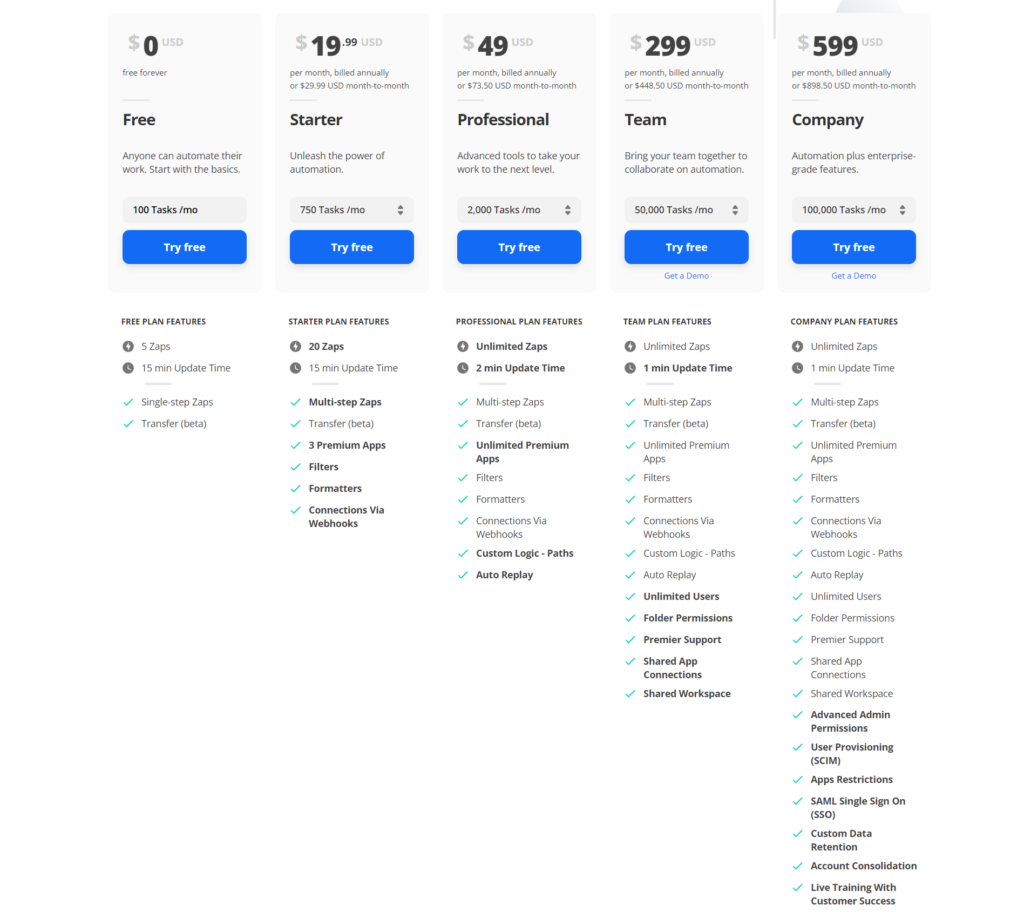
Check out the Pricing page of Zapier above. They offer a limited set of features as a part of the free tier. It will help give them a taste of the performance of the products without giving too much away.
On-Page SEO
On-page SEO simply refers to the content that is published directly to the website. Here specific web pages rank on the search engine result pages. It could be a landing page, blog post page, or any content.
Here are some tips to make your on-page SEO effective,
- Keyword research: Find the most relevant and high performing keywords and use them to rank on search engines
- Content creation: Focus on creating valuable pieces of content that are designed to offer value and information to the visitors
- Keyword optimization: After finding the set of keywords, you need to properly place it within the content to make it effective. Avoid keyword stuffing since that can ruin your rankings real quick.
All of these may sound complicated, but there are many tools, such as UberSuggest, BuzzSumo, Google Keyword Planner, etc., that can help with your keyword research and content creation.

Here’s an example from UberSuggest. If you type the term email marketing, you can find a long list of keyword options that potential customers commonly search for.
When you implement these keywords into the content on different web pages, you can easily make them rank in the SERPs, which will help drive the visitors to your website.
Technical SEO
Technical SEO is mostly about the back end of your website. These are not directly present in the website content but have a great significance in your search engine result rankings. Some of the elements included in technical SEO are security, 404 errors, indexing, mobile-friendliness, website load speed, etc.

You can find different SEO audit tools like SEOptimer to identify any flaws in the backend of your website, which you can later fix from a website developer.
Off-Page SEO
Lastly, off-page SEO is about the other websites that are linked to your content. This is solely dedicated to making your content more valuable and credible. Off-page SEO is also very important in determining your SERP rankings. The higher number of backlinks you gain from high domain authority websites, the higher your ranking gets over time.
However, quality is always over quantity here. Start finding websites with high domain authority and try to get backlinks via different channels or strategies such as social media, public forums, guest posting, etc. This will help increase the visibility of your business and build more authority in the industry.

For example, Hackernoon is a credible website that you can try for guest posting and gaining backlinks for your software.
Conclusion
Building a winning software marketing strategy doesn’t happen overnight. It results from a combination of continuous efforts, using the right set of tools, and regularly measuring to ensure you are adequately reaching your ideal audience. Without a software marketing strategy, your startup is likely to fail since you cannot really fill the sales pipeline for long without these strategies. Therefore, start your journey by building your software marketing strategy today with the right techniques and witness the growth in your business.
Share This Post
RocketHub Team
The launch crew at RocketHub writes about startup and SaaS growth. Be a fellow Rocketeer and show some love by commenting below with your thoughts on our content.
Table of Contents
Get The Latest Updates
Subscribe To Our Weekly Newsletter
Sign up below to be one of the first crew members onboard and get early access to amazing deals.
Recent Posts


Social Media
Categories
Related Posts

Lifetime Deal Platforms
The best lifetime deal platforms for software. Platforms lik RocketHub scour the web for the highest quality products to bring buyers the best lifetime deals on their platform.
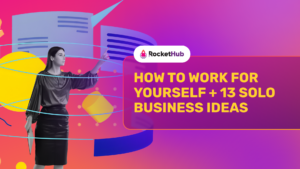
How to Work for Yourself + 13 Solo Business Ideas
Do you ever wonder if being your own boss could truly set you free? In this article, we’ll explore the theory that unleashing entrepreneurial freedom

7 Reasons Why Every SaaS Team Needs Interactive Demos
Making a Case for Interactive Demos: 7 Reasons Why Every SaaS Team Needs Them Let me paint a scenario for you. You want to buy

